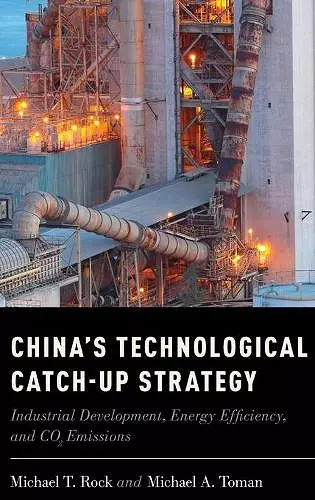China's Technological Catch-Up Strategy
Industrial Development, Energy Efficiency, and CO2 Emissions
Michael Toman author Michael T Rock author
Format:Hardback
Publisher:Oxford University Press Inc
Published:2nd Apr '15
Currently unavailable, and unfortunately no date known when it will be back

Prior to 1979, China had a bifurcated and geographically-dispersed industrial structure made up of a relatively small number of large-scale, state-owned enterprises in various industries alongside numerous small-scale, energy-intensive and polluting enterprises. Economic reforms beginning in 1979 led to the rapid expansion of these small-scale manufacturing enterprises in numerous energy-intensive industries such as aluminum, cement, iron and steel, and pulp and paper. Subsequently, the government adopted a new industrial development strategy labeled "grasp the large, let go the small." The aims of this new policy were to close many of the unprofitable, small-scale manufacturing plants in these (and other) industries, create a small number of large enterprises that could compete with OECD multinationals, entice these larger enterprises to engage in high-speed technological catch-up, and save energy. China's Technological Catch-Up Strategy traces the impact of this new industrial development strategy on technological catch-up, energy use, and CO2 emissions. In doing so, the authors explore several detailed, enterprise-level case studies of technological catch-up; develop industry-wide estimates of energy and CO2 savings from specific catch-up interventions; and present detailed econometric work on the determinants of energy intensity. The authors conclude that China's strategy has contributred to substantial energy and CO2 savings, but it has not led to either a peaking of or a decline in CO2 emissions in these industries. More work is needed to cap and reduce China's CO2 emissions.
Comprehensive, innovative, thought-provoking analysis of the world's largest carbon emitter. Exceptionally well-researched and accessible to specialists and generalists alike, this book should be on the desk of anyone seriously concerned about climate and energy policies. * Richard Morgenstern, Senior Fellow, Resources for the Future *
China is the largest consumer and producer of energy in the world, and in China's Technological Catch-up Strategy, Michael Rock and Michael Toman give us an in-depth look at the energy policies, company strategies and their effects on pollution and technology acquisition in the Chinese industries of Cement, Iron & Steel, Aluminum and Paper. A fascinating read for those interested in peering into the black box of Chinese industrial operations. * LUsha C. V. Haley, co-author, Subsidies to Chinese Industry: State Capitalism, Business Strategy, and Trade Policy *
ISBN: 9780199385324
Dimensions: 163mm x 234mm x 25mm
Weight: 558g
292 pages